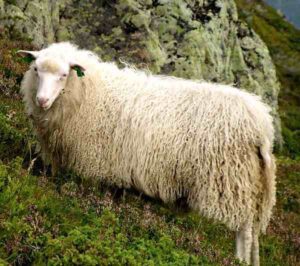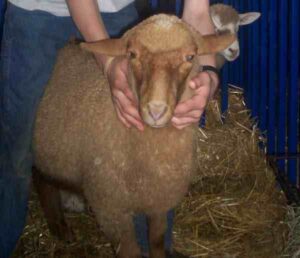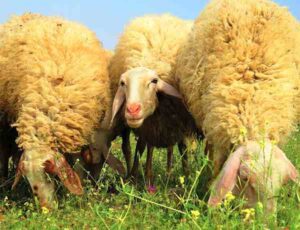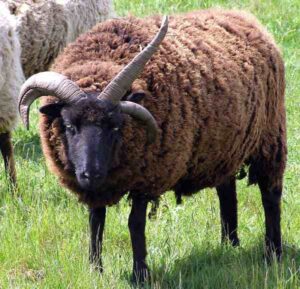Do you know ‘how to care for sheep’? If no, then you must need to learn the basics of caring for sheep. Sheep are actually grazing animals and they are kept as livestock on small or commercial farming operations.
They are raised for meat, milk, fiber, skin and also for many other different purposes. Sheep are wonderful and lovable animals that generally have 6-14 years of average lifespan.
But sometimes a sheep can live for up to 20 years if it is well cared. Sheep are available throughout the world, and there are hardy any place where sheep are not available.
Actually sheep are adaptable and can withstand to many climates and they are very hardy. There are many different sheep breeds (more than 200 breeds) available throughout the world. Each of these breed can thrive and do very well under particular weather and environmental conditions.
By the way, if you are planning for raising a few sheep or want to operate a commercial sheep farming business, then you have to select and purchase the appropriate breed for your geography and living conditions. But before starting the operation, you have to learn more about caring for sheep.
Guide To Caring For sheep
You may know just like people, every sheep is different, every farm is different, every sheep farmer’s personally is different. So there are no cookie cutter approaches for raising sheep. Every situation is different in case of raising sheep, so you should do your own research.
And consult an experienced vet in your area if you have any health issues of your sheep. However, here we are discussing more about the basics of caring for sheep.
Stpe 1: Provide Good And Comfortable Shelter
First of all, you have to ensure a very good shelter for your sheep which is also comfortable for them. Your sheep need shelter year-round for protecting them from predators and adverse conditions. A barn will be great for your sheep, but it is not a mandatory and just a three-sided housing structure will be fine for them.
But having a barn with stalls will be good, because you will be able to separate the sick, pregnant sheep or lambs from the rest of the flock. As sheep are grazing animals, so having a shaded area outside will be good for them.
And the shaded area will help the sheep to take rest when they are allowed outside to graze. A clump of trees or hanging structure will be fine for this purpose.
The shelter also needs to be comfortable for the animals. You can give them straw bedding, and how much bedding you should have depend on how much time your sheep spend inside their shelter.
Give them a good, thick bedding of dry hay during the colder climates for keeping them clean and warm. You should avoid sawdust as a bedding material, because it can ruin the wool of your sheep and it is also not very absorbent.
Along with the above facilities in the shelter, you also have to ensure good ventilation system. Keep the airflow moving inside the shelter either by installing a fan or by keeping the doors and windows open. This is very important especially if you live in a hotter climate or have hot summers.
Step 2: Ensure Access To Pasture
Sheep love to graze, so you should have your pasture ready before starting. And also ensure that your pasture can supports the number of sheep you are willing to have. It will be better if you can consult with an expert in your area for pasture size recommendation.
Generally the size of pasture depends on the quality of soil, the amount and distribution of rainfall and also on the management of the pasture. An acre of pasture can feed more sheep in the wet season than in the dry season.
When the sheep are allowed to graze freely, they will mostly eat clover, forbs, grass and other pasture plants. But sheep generally love forbs and it’s usually their first choice of food in a pasture. So you can prepare your pasture with different types of grass, plants and forbs.

Step 3: Setup Secure Fencing
Setting up fencing for your sheep is very important, because sheep are great escape artists. A good fencing system will help to keep your sheep inside. They also need fencing for keeping them safe from predators, and sheep are very vulnerable to predators (especially coyotes and dogs).
Generally a 1.5 meter tall fence is very good for keeping the sheep inside the pasture. But higher fence is required in some areas for keeping predators out.
Step 4: Provide Good Quality And Nutritious Food
Feeding quality food is the most important part of caring for sheep. You have to ensure feeding quality supplementary feeds, although you have pasture for the animals. Because pasture can’t always feed the sheep year-round naturally. You can feed your sheep with hay if the pasture is not sufficient. The amount of hay required will depend on the quality and quantity of the grass.
Generally a sheep with 45 kg live body weight will eat around 500 grams of hay. Hay is generally cut, dried and baled forage. Clover and alfalfa are generally good for sheep and are more nutritious.
In case of feeding your sheep grains, try to avoid over feeding grains. Because grains are not actually that great for sheep. And eating too much grans can cause your sheep to bloat. But if you want or need to supplement your sheep’s diet with grain, then try to get a mix that is specially formulated and good for sheep.
Never store your sheep’s feed for longer time, not more than one month. Storing feed too farm in advance can cause the feed to mold and it can become toxic to sheep.
So, it’s always good feed your sheep with fresh food. Sheep also need salt, so ensure your animals have access to salt (required minerals for sheep come from salt).
You can use salt blocks for this purpose. You an also consider loose mineral salt. Because it tends to be less expensive than the salt blocks and you can place it in a feeder inside their shelter. Along with providing quality foods, your sheep also require access to adequate clean and fresh water. A mature sheep generally consume water throughout the day. So ensure availability of fresh water all the time.
Step 5: Ensure Regular Shearing
You need to shear your sheep at least once a year. Avoid shearing your sheep before cold weather and consider shearing them before the onset of warmer weather. Review the sheep shearing information and guide for more information about shearing a sheep.
Step 6: Ensure Hooves Care
Foot rot is a common problem for sheep. It is actually more frequent with the animals that walk on wet or damp ground. If your sheep have access to damp or wet ground, then their hooves can become soft and it makes it easier for bacteria to get in. You can ensure a dry environment for your sheep for avoiding such problems.
Step 7: Ensure Good Health Care
Look for unusual activities on your sheep. You can notice unusual activities when your sheep are sick. So keeping an eye on their basic health can alert you to problems more quickly so that it doesn’t spread to the rest of the flock.
Generally a nasal discharge may be one of the first signs of a respiratory infection. Also check the coat of your sheep frequently for any external parasites (such as mites or lice) and treat immediately.
Step 8: Perform Regular De-worming
You need to check your sheep’s stool occasionally if they have worms. You can call an expert if you can’t do it yourself. Use de-worming as per the suggestion of your vet.
Step 9: Vaccinate Timely
You need to vaccinate your sheep timely for preventing most of the common health issues. This also a very important part of caring for sheep. Learn more about vaccination schedule for sheep.
Step 10: Ask For Help
Ask for help immediately from a vet or from an expert within your area if you notice anything uncommon or dangerous for your flock.
These all are the basics of caring for sheep. It’s recommend to take good care of your animals for keeping them healthy and productive. God bless you!






